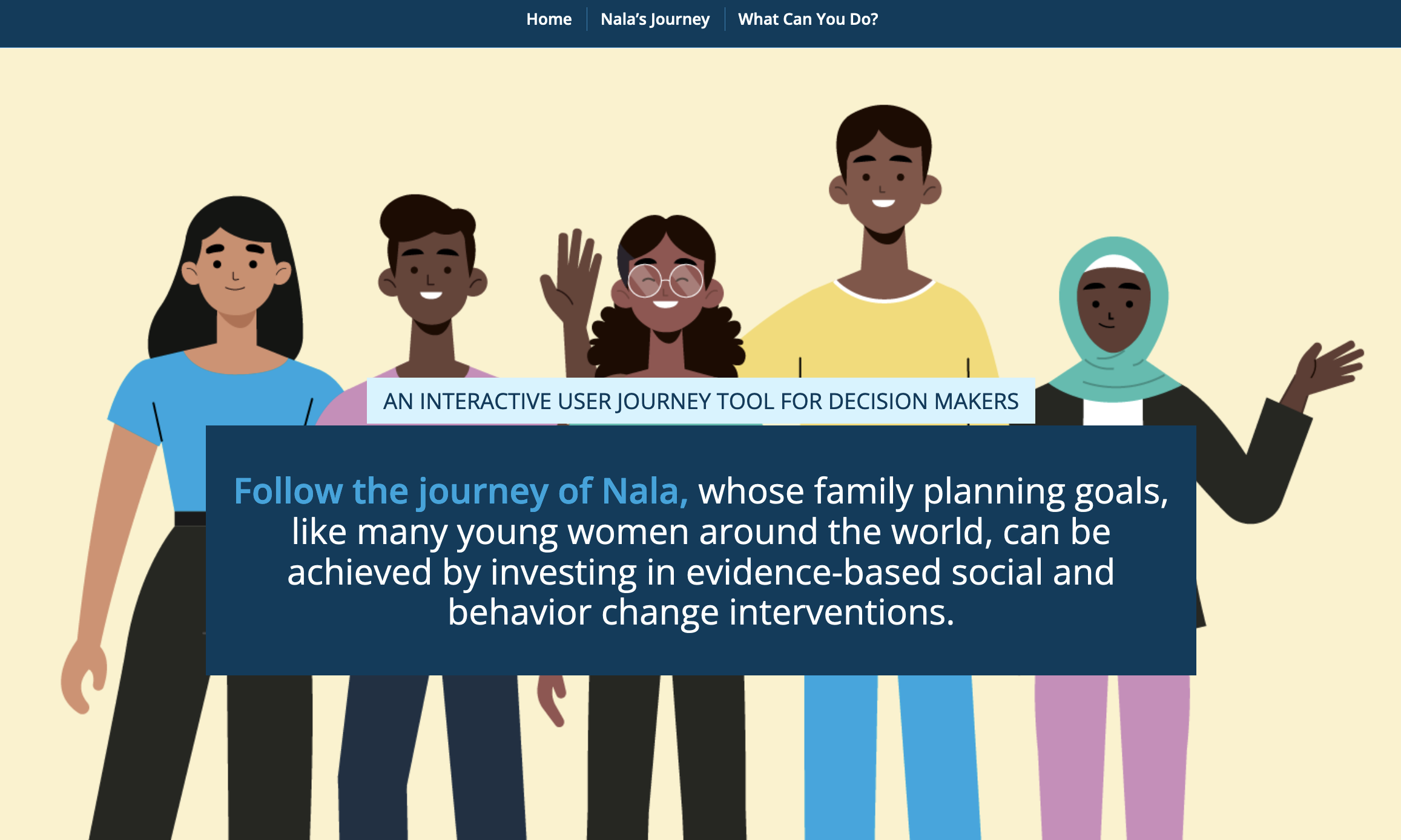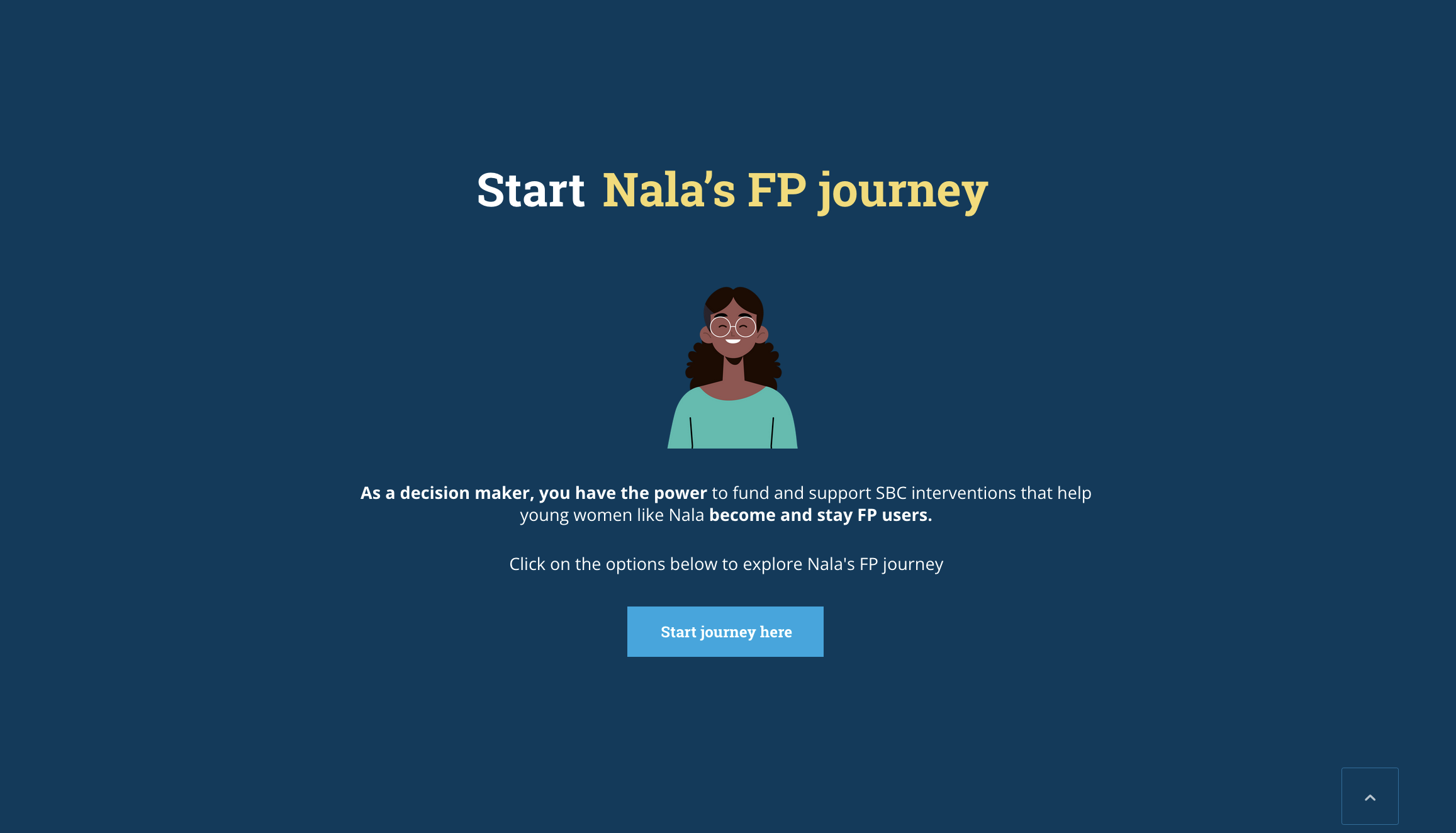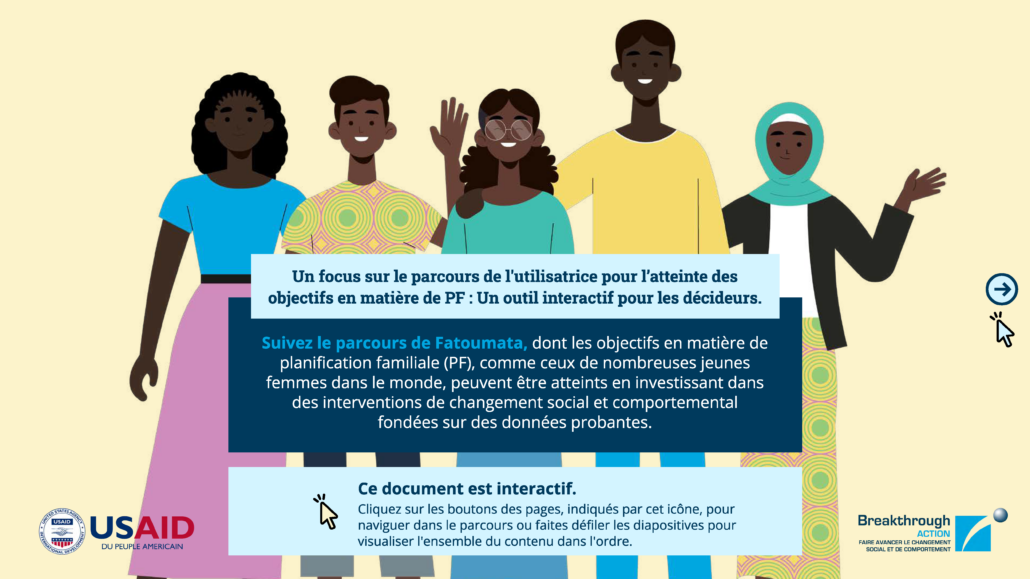A multitude of factors influences family planning (FP) uptake and maintenance. Social and behavior change (SBC) is uniquely placed to understand and address those factors. However, FP programs often underutilize and underfund SBC. Helping decision makers understand the social and behavioral drivers of FP use and how SBC can effectively address those drivers can lead to greater use and investment in SBC. Breakthrough ACTION designed the Social and Behavior Change for Family Planning User Journey Tool (also available in French) to encourage investment in SBC within FP programming. The tool helps SBC advocates communicate the need for social behavior change in an easy-to-grasp visual format.
The interactive tool follows the FP journey of Nala—a fictional young woman who represents the experiences of young women like her around the world—highlighting key social and behavioral determinants that influence her decision to learn about, use, and continue using FP. The tool also features examples of evidence-based SBC interventions that address those behavioral determinants and data about the positive impact of SBC in FP. It presents actions decision makers can take to support SBC in FP and offers practical tools to help them get started.
The tool has three sections:
1. Interactive webpage: This webpage introduces the tool and presents data on the impact of SBC in FP.

2. User journey module: This module presents Nala’s FP journey. Decision makers choose whether to explore a married or unmarried journey. Then, they choose which stage in Nala’s FP journey to explore: when she gets introduced to FP, starts using FP, or continues using FP. Finally, they review the emotions, barriers, needs, and people influencing that stage of the journey, as well as proven SBC interventions that address those factors.

3. Call to action module: This module introduces three key actions decision makers can take to support SBC in FP.

Quick Tips Guide
SBC advocates can also reference the tool to help them navigate and prepare to use it with decision makers in their contexts. This Quick Tips Guide has three parts:
- Presentation: An overview of the tool’s structure and purpose
- Preparation: Checklists to help prepare for meetings with decision makers
- Facilitation tips: How to contextualize the tool and guide the conversation
Un focus sure le parcours de l’utilisatrice pour l’atteinte des objectifs en matière de PF

Cet outil de plaidoyer pour le changement social et de comportement (CSC) est adapté de l’outil du parcours de l’utilisatrice original , selon le feedback des parties prenantes dans les pays du Partenariat de Ouagadougou. Cette version française est un outil interactif et téléchargeable que les champions du CSC peuvent utiliser avec les parties prenantes de la planification familiale (PF) pour les convaincre de la valeur ajoutée du CSC dans les programmes de PF.
L’outil décrit le parcours d’un personnage fictif, Fatoumata, une jeune femme (mariée ou célibataire), dans sa décision de devenir et de rester utilisatrice d’une méthode de PF. L’outil met en lumière les personnes, les facteurs et autres déterminants comportementaux qui affectent l’accès de Fatoumata aux méthodes de PF tout au long de son parcours, et présente des mini études de cas sur la façon dont le CSC a abordé ces éléments pour atteindre les résultats souhaités en matière de PF. Bien que Fatoumata soit un personnage fictif, son expérience représente la réalité de nombreuses adolescentes et jeunes femmes comme elle en Afrique subsaharienne francophone et dans le monde entier.
L’outil présente également des données clés et des ressources techniques que les champions du CSC et les décideurs en matière de PF peuvent utiliser pour accroître le soutien au CSC dans leurs propres contextes et agendas nationaux.
Conseils pratiques
Les partisans du CSC peuvent aussi consulter l’outil pour se familiariser et se préparer à l’utiliser avec les décideurs dans leurs contextes respectifs. Ce guide de conseils pratiques comprend trois parties :
- Présentation : une vue d’ensemble de la structure et de l’objectif de l’outil
- Préparation : des listes de vérification pour la préparation des réunions avec les décideurs
- Conseils de facilitation : comment contextualiser l’outil et orienter la conversation


